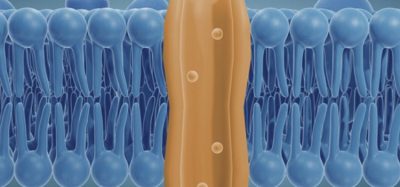New mouse model mimics rare GRIN2D disorder
Posted: 10 July 2025 | Drug Target Review | No comments yet
Researchers at Tel Aviv University have developed a new mouse model that accurately mimics a rare and severe genetic disorder caused by mutations in the GRIN2D gene – allowing for study of the disease’s progression and the testing of potential drug therapies.


Researchers at Tel Aviv University’s Gray Faculty of Medical and Health Sciences have successfully developed a mouse model that accurately replicates an extremely rare and sometimes fatal genetic disorder caused by mutations in the GRIN2D gene. This disorder, characterised by developmental epilepsy, severe motor delays and often premature death, affects fewer than 40 people worldwide.
“We were contacted by the parents of an Israeli child named Adam, now eight years old, who is one of only about 40 people worldwide diagnosed with this extremely rare genetic disease,” Professor Karen Avraham, Dean of the Faculty and co-leader of the study. “It involves a mutation in a gene called GRIN2D, which causes developmental epilepsy, significant motor and cognitive delays, and in some cases, premature death.”
Creating a window into the disease
The team, led by Professor Moran Rubinstein and Professor Avraham, faced early challenges in modelling the disease. The first mouse models carrying the mutation died within weeks, mirroring the severity seen in human patients but limiting opportunities for research.
Automation now plays a central role in discovery. From self-driving laboratories to real-time bioprocessing
This report explores how data-driven systems improve reproducibility, speed decisions and make scale achievable across research and development.
Inside the report:
- Advance discovery through miniaturised, high-throughput and animal-free systems
- Integrate AI, robotics and analytics to speed decision-making
- Streamline cell therapy and bioprocess QC for scale and compliance
- And more!
This report unlocks perspectives that show how automation is changing the scale and quality of discovery. The result is faster insight, stronger data and better science – access your free copy today
To overcome this, the scientists used advanced genetic engineering to create a new strain that could carry the mutation without immediate symptoms. This allowed them to breed affected offspring suitable for study. These affected mice exhibited symptoms paralleling human patients – early neurological impairments, epilepsy and a drastically shortened lifespan.
Because the disease is so rare, its progression over time is not well understood
“Because the disease is so rare, its progression over time is not well understood. The mouse model helped us characterise its symptoms at different ages, and the tests we performed revealed interesting findings: neurological symptoms such as epilepsy, hyperactivity, and severe motor impairments were evident in the mice from infancy,” Prof Rubinstein said. “Cognitive impairment, by contrast, appeared later and gradually worsened. Additionally, the affected mice had a short lifespan -most did not survive to sexual maturity, dying from severe seizures.”
Understanding brain function and progression
Further experiments focused on the communication between neurons – particularly in the cerebellum – which is critical for motor control. Abnormal neuronal activity was detected as early as two weeks old in the mice – indicating early disease onset. While some neuronal activity normalised with age, defective communication and structural neuronal changes developed over time.
Electroencephalography (EEG) tests revealed a distinctive pattern of ongoing disrupted brain activity, unique from other epilepsy forms where brain function normalises between seizures.
Professor Rubinstein emphasises the significance:
“In most forms of epilepsy, seizures result from disrupted brain activity, but between seizures, brain activity is relatively normal,” Professor Rubinstein said. “In this disease, however – both in children and in the mice – brain activity is continuously disrupted. Moreover, using specific metrics we developed, we identified the same abnormalities in both mice and humans – an especially strong indication of the model’s validity.”
Testing treatments and future directions
With the validated model, the team began testing existing drugs. Notably, ketamine, previously considered a treatment option, worsened seizures in the mice. Conversely, memantine and phenytoin showed partial improvements in brain function and seizure control.
Modelling the disease with a mouse model is a crucial tool for guiding clinical decisions in treating patients with rare diseases
“Modelling the disease with a mouse model is a crucial tool for guiding clinical decisions in treating patients with rare diseases. The model enables us to test the efficacy of existing drugs, as well as the safety and efficacy of new drugs before trying them on patients,” said Professor Moran Hausman-Kedem from Dana-Dwek Children’s Hospital.
“For example, findings from the mouse model helped demonstrate that memantine may help prevent seizures. Using a mouse model provides critical information about new treatment approaches for rare diseases, where the number of patients is too small to allow broad statistical validation. In such cases, animal model experiments can offer breakthrough insights, advancing the ability to deliver personalised medicine.”
Hope for patients and families
Professor Rubinstein concludes on an optimistic note about ongoing research:
“In this study, we created a mouse model of a rare genetic disease caused by a mutation in the GRIN2D gene. Using this model, we gained a better understanding of disease progression and tested the efficacy of several existing drugs. Currently, in follow-up studies, we are testing additional treatments – both pharmacological and genetic – and have obtained promising results, such as improved cognition and motor function and extended lifespan in the affected mice. We very much hope that our work will bring hope and progress to families and children facing this severe and rare disorder, as well as to those affected by other brain diseases caused by similar mechanisms.”
Related topics
Animal Models, Central Nervous System (CNS), Disease Research, Drug Discovery, Drug Repurposing, Gene Testing, Genetic Analysis, In Vivo, Neurosciences, Personalised Medicine, Translational Science
Related conditions
genetic disorders, GRIN2D disorder
Related organisations
Tel Aviv University








